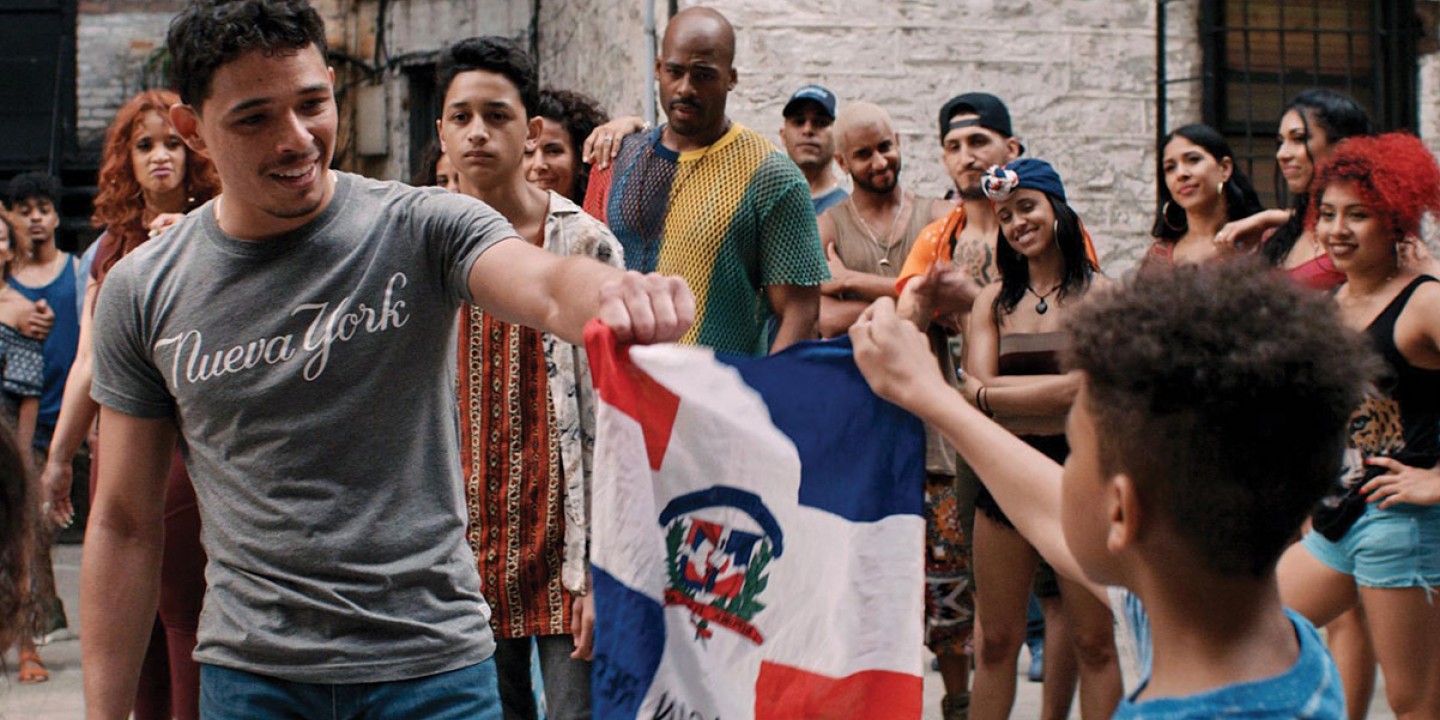Like Hamilton, In the Heights jolts the audience into new perspectives
Still, I wish Lin-Manuel Miranda had asked more of us.

Lin-Manuel Miranda’s music has been the soundtrack for both of my family’s pandemic summers. Like many people who could never afford a Broadway ticket to see the original cast perform Hamilton, we scheduled our whole Fourth of July weekend last summer around watching the filmed version on Disney+. This summer In the Heights, a screen adaptation of Miranda’s first Broadway musical, is being marketed as the reason to return to movie theaters. (It is also streaming on HBO Max for those of us with unvaccinated children.)
Compared to Hamilton—Miranda’s hip-hop musical about America’s founding that has made him a household name—In the Heights doesn’t carry the world-historical weight of the American Revolution on its shoulders. It occupies, literally and symbolically, much smaller terrain: just a few city blocks in the Washington Heights neighborhood of Manhattan where Miranda, whose parents moved there from Puerto Rico, grew up. Under Jon M. Chu’s direction, however, the small confines of those blocks expand to hold the capacious, spiraling dreams of Usnavi (played by Anthony Ramos), a first-generation Dominican immigrant, and his childhood friends as they navigate their relationship to a neighborhood that is quickly gentrifying.
Read our latest issue or browse back issues.
The characters are all wrestling with the question of whether they should—and whether they can—stay in the neighborhood that formed them. Their dreams—to return to the Caribbean, to move downtown and break into the fashion world, to make good on their family’s sacrifice to send them to an elite school—seem to be driving them away. But the neighborhood, a pastiche of cultures, languages, and life experiences forced together by economic necessity and, long before that, by the forces of colonialism and slavery, won’t let them go. Through electrifying spectacles of dance, song, color, and light, the film insists that the beautiful particularity of immigrant cultures add something irreplaceable to the tapestry of American life.
In all his work, Miranda earnestly offers a certain version of the American dream, in which hard work and persistence can carve a path out of poverty. Maybe even more particularly, he believes in the gift of writing itself as the heroic act that will blaze the path. Usnavi’s opening rap in In the Heights sounds almost exactly, in beat and cadence, like Alexander Hamilton’s first main rap sequence in the song “My Shot.” This might just be the case of a younger artist experimenting with a sound he later perfects. But since Miranda wrote both roles for himself as the original actor, it is impossible not to see Miranda in Usnavi and Usnavi in Hamilton: all nerdy, verbally precocious kids who use their gifts with language to wrest new futures into being.
Verse for verse, Miranda’s lyrics convey a sheer quantity of ideas and complex inner states, with puns and allusions and humor to boot, that rival any gifted wordsmith working in any genre. His style of verbal precocity and rapid-fire wit isn’t the only way to turn language into art, of course, but if it is your cup of tea, he brews it strong and sweet. My family drinks it by the potful, and we are delighted to add In the Heights to our summer mix.
But our relationship to Miranda—and really, our relationship to our own Whiteness as fans of his art—has grown more complicated in the five years since my family started listening to the Hamilton soundtrack. In those last days of the Obama administration, Hamilton felt like a radical vision of the nation making good on our ideals. It was easy to feel like appreciating Miranda’s own art and genius was somehow itself a sign of liberal progress.
Last summer, I experienced moral vertigo watching the same musical. Our younger child asked me this time if Christopher Jackson was a good guy or a bad guy. “Well, he’s playing George Washington, so in this movie he’s a good guy,” I answered. “But the real George Washington thought Black people should be slaves, so he is actually a bad guy, right?” she insisted, proving that our lessons from pandemic school were sticking.
Miranda is aware of these contradictions, but he doesn’t linger on them, I think, because he is wagering that forcing his audience to think about the Founding Fathers as streetwise rappers will jolt them into a new appreciation of the radical claims of the early republic. But the reverse of this conceit—that today’s rappers and Black activists are the founding fathers and mothers of the republic we need to birth—is not a point the musical drives home.
So, too, In the Heights pulls back from a full exploration of the forces that are directly shaping the plot. We get glimpses into why our characters can’t climb the social ladder of the American dream—the good apartments are only rented to people with rich parents who can act as guarantors, local businesses are being displaced by gentrifying tenants—but we don’t have a sense of why this is or what could be done about it. We are cheering for the main characters not to abandon their neighborhood, but it is never explained why Usnavi’s corner store could survive when so many other businesses have not. Surely sheer love of Latinx culture isn’t going to pay the spiking rent. And it asks very little of my White family—ourselves gentrifiers in a different neighborhood in New York City—to celebrate diverse cultures around us and revel in Miranda’s genius as a lyricist and storyteller.
Now that we are embroiled in real-life debates about how to commemorate slave-owning founders and how to study structural racism in our schools, and as we face major debates as a nation about the path of immigration, I am wary of any vision of our past or present that invests the future to the power of individual genius, even one as prodigious as Miranda’s. I can’t stop singing along, but I am trying to pay attention to the moments when the sweetness turns cloying in my mouth.
This is, of course, part of what makes great art: the capacity to withstand both devotion and critique. Which is a good thing, since I am confident that Miranda is going to be part of our soundtrack for many years to come.
A version of this article appears in the print edition under the title “American dreaming.”







